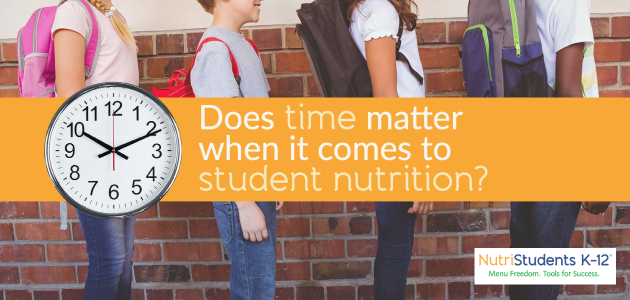
With so much focus on student academic achievement, it may feel like time has been whittled away from the lunch period in favor of more instructional time in the classroom. According to the School Nutrition Association, the nationwide average lunch period is about 30 minutes. However, the amount of time available for students to actually eat (referred to as “seat time”) may get cut down to less than 10 minutes due to factors such as spent walking to the cafeteria, standing in line, socializing with friends and finding a place to sit. Does the amount of time students have to eat impact overall nutrition?
New research suggests school-age children eat more fruits and vegetables when given more time during lunch periods to eat. In the study, children who stayed seated for 20 minutes for lunch ate 11.3% more fruit and 14.1% more vegetables than children who were required to sit for just 10 minutes. This resulted in an increase in the consumption of all individual nutrient types, potentially improving diet quality in students while reducing food waste from uneaten meals.
While it may feel like you as a school foodservice professional don’t have much influence to adjust the amount of time allotted for lunch, there are some best practices that you can do to give students have as much time as possible to eat. As you prepare for students coming back to the cafeteria this fall, consider these ideas:
For more strategies and suggestions to engage school administrators and staff, parents, and community members to ensure students have plenty of time to eat lunch, check out Making Time for School Lunch, a research brief from the CDC.